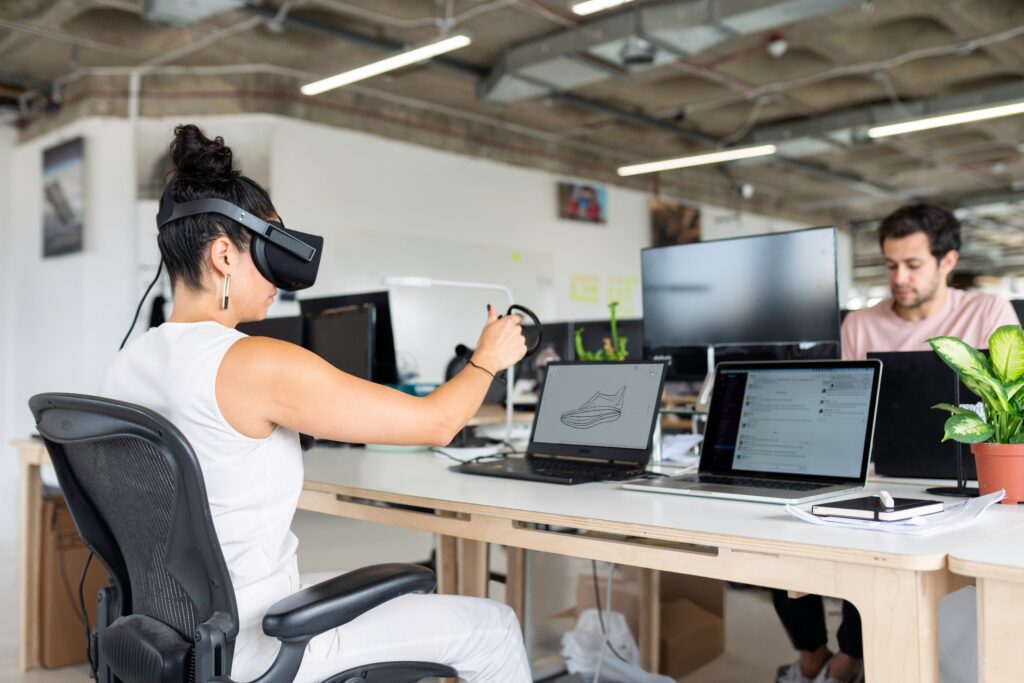Uncertain Future of PepsiCo
Before the successful transition to a design-driven approach, the future of PepsiCo was very uncertain. Many investors were dissatisfied with the annual sales and market share. Thus, discussions about a separation of the company were underway.
The former CEO, Indra Nooyi, wanted to change the corporate’s direction to retain her position and save the company’s future. While shopping for groceries, she noticed the variety of products, the unorganized shelves, and that it is hard to spot striking products. Indra Nooyi asked herself, “which products really speak to me?”. As a result, she decided that it is necessary to transform the innovation and design processes for PepsiCo. She began to observe the change in consumer behavior driven by social media and other things. Thus, the company’s marketing was becoming much more important.
At the beginning of the change, Indra Nooyi gave her close associates an empty photo album, a camera, and the task to take pictures of anything they thought represented good design. After 6 weeks, the results were sobering. Many gave the task to their wives or returned an empty photo album. The CEO realized that no one in the entire company understood what design even was. Every time she addressed design it was only a discussion about the externalities. It was like changing the blue shade of the Pepsi Can over and over again – Instead of designing the product from scratch (from concept to what’s on the shelf). It was time for an internal change.
PepsiCo’s First-ever Chief Design Officer – (Mauro Porcini)
Everything changed when Mauro Porcini joined in 2012 as PepsiCo’s first-ever Chief Design Officer. After his good work at 3M, Nooyi decided to talk about PepsiCo’s vision for the future and how he could help the company achieve its goals. Porcini was allowed to create a Design Studio for PepsiCo. He understood the possibility of design thinking and tried to apply it at PepsiCo. His definition of Design Thinking is a model with three phases (empathy, strategy, and prototyping). There “empathy” means to understand the people, their needs, and their wants, and how to apply this to business. The second phase, “strategy”, includes the marketing and business processes. “Prototyping” is defined by Porcini as: “Prototyping is a way of thinking that drives efficiency, increases quality, and builds confidence in the company. It is important when you need to take a risk on something that is innovative and new to the world”. For this phase, the studio offers lots of possibilities to create mock-ups, sketches, or models to bring innovative ideas to life.
Design Thinking starts with the right Working Environment

Design Thinking starts with the right working environment. Mauro Porcini’s Design Studio served as a place to foster collaborative, creative, and risk-taking thinking. Design Thinking can be seen as the opposite of solitary work. At PepsiCo, all areas of the company came together. Whether the R&D, marketing, or design department – creative thinking was encouraged in the Design Studio. The Design Office includes a virtual reality room, a music studio, a 3D printer, and much more. The team can create digital and physical products and develop them together. In this studio, new products, ads, and further ideas are being created.
The Phases of Corporate Change – (How to change a company’s culture)
Design Thinking can generate new projects and strategies that solve existing consumer needs. However, it is not easy to change an existing corporate structure and culture and put design at the center. Mauro Porcini describes corporate culture change in five phases. The first phase is “denial” – the company does not see the need to change anything at the time and rejects the idea of design (“I don’t even need design”). In the second phase “Hidden Rejection”, the team thinks they’re getting traction but in reality, people remain skeptical. From the third phase “The Occasional leap of faith” the new idea gains trust, more people of the company are ready to go the new way and consider design as an important element.
“You can talk about design forever and be very eloquent and convince everybody, but until you learn successes in the market, they will never really completely believe you.”
Mauro Porcini
In the fourth phase “Quest for confidence” the company recognizes that the new approach is valuable for the development of the company. The management supports the new initiative with further resources and more people are hired to promote the new design-driven approach. Porcini’s team has grown since 2012 to the point where it now has more than 220 employees – “We’re a startup in many ways because we’re building, a new culture inside the company”. The fifth phase is “Holistic awareness” the company understands the importance of design and implements the approaches across all teams – it becomes standardized. According to Porcini, this phase is never reached because you have to keep challenging the system to create something bigger and more diverse.
Effects of Design Thinking
Thanks to Indra Nooyi, Mauro Porcini, and their teams, PepsiCo has successfully reacted to the change in consumer behavior and creates, nowadays, products through the Design Thinking strategy.
One of these products is “Pepsi Spire” a futuristic beverage dispenser that can be operated with a huge touch screen and allows the user to create several combinations of beverages. Through Design Thinking, it was found that consumers love to try new flavors and mix drinks. Using the “Pepsi Spire”, no combination is impossible, and the perfect drink can be created at will. The user is in control and can decide what they want to drink.
“Prototyping and testing” has become an important area in the company. The company is pursuing an aggressive 3-months strategy in the Asian market (mainly in China & Japan). New products and variations are introduced to the market (e.g., Pepsi with cucumber flavor) to realize the potential of the product. If the variation is a success, the product remains and is added to more stable markets, for example, the US.
“If you launch quickly, you have more failures, but that’s OK because the cost of failure in those markets is low.”
Mauro Porcini
This procedure leads to the success story of Mountain Dew Kickstart. This is a low-calorie energy drink as an alternative to other energy drinks and coffee. This product has earned PepsiCo more than $200 million.
Design Thinking as the Driver of Innovation – (Brand for ‘future societies’)
PepsiCo is more than just a beverage and snack brand these days. Design Thinking plays an enormous role in the company’s process of bringing new products to market and leading the way as an innovator. This is mainly thanks to Mauro Porcini, who changed the company from the ground up and made a lasting impact on the corporate culture. Design has become an essential part of PepsiCo and is not an unknown concept anymore.
Among other things, Pepsi has been the main sponsor of the Super Bowl Halftime Show since 2013, has redesigned the logos of its well-known brands, and released popular variations of existing products. PepsiCo is more customer-focused and tries to be close to the customer no matter in what business area. The American company succeeds in this and therefore has an advantage over its competitors. Even during the pandemic, PepsiCo has been able to react quickly and released its online store in 2020 (pantryshop.com). Consumers can order bundles of PepsiCo products as needed, which are delivered directly to their homes.
Design Thinking has been adopted throughout the company and will continue to ensure that PepsiCo remains innovative and meets customers’ needs and wishes.



